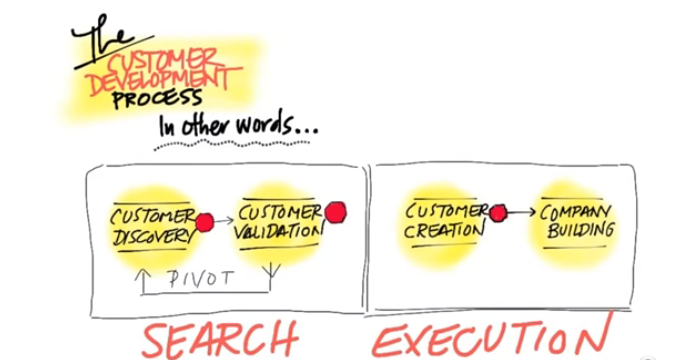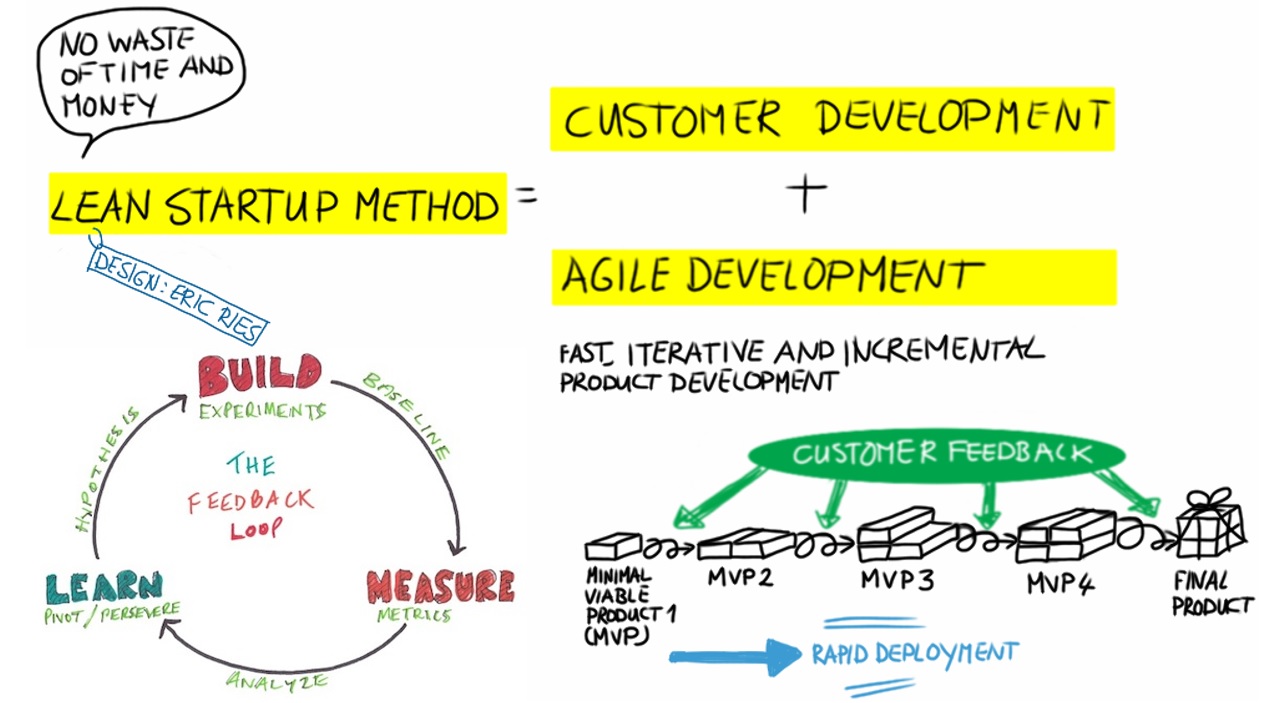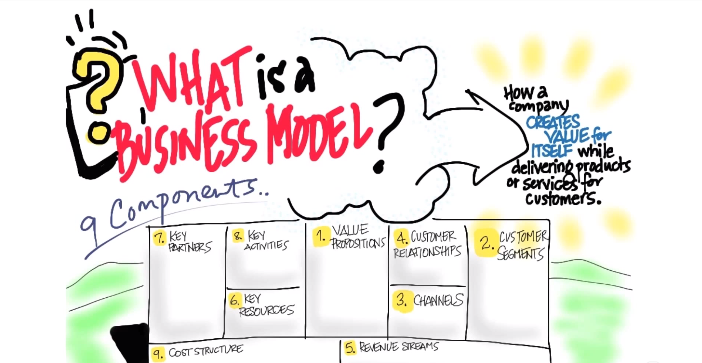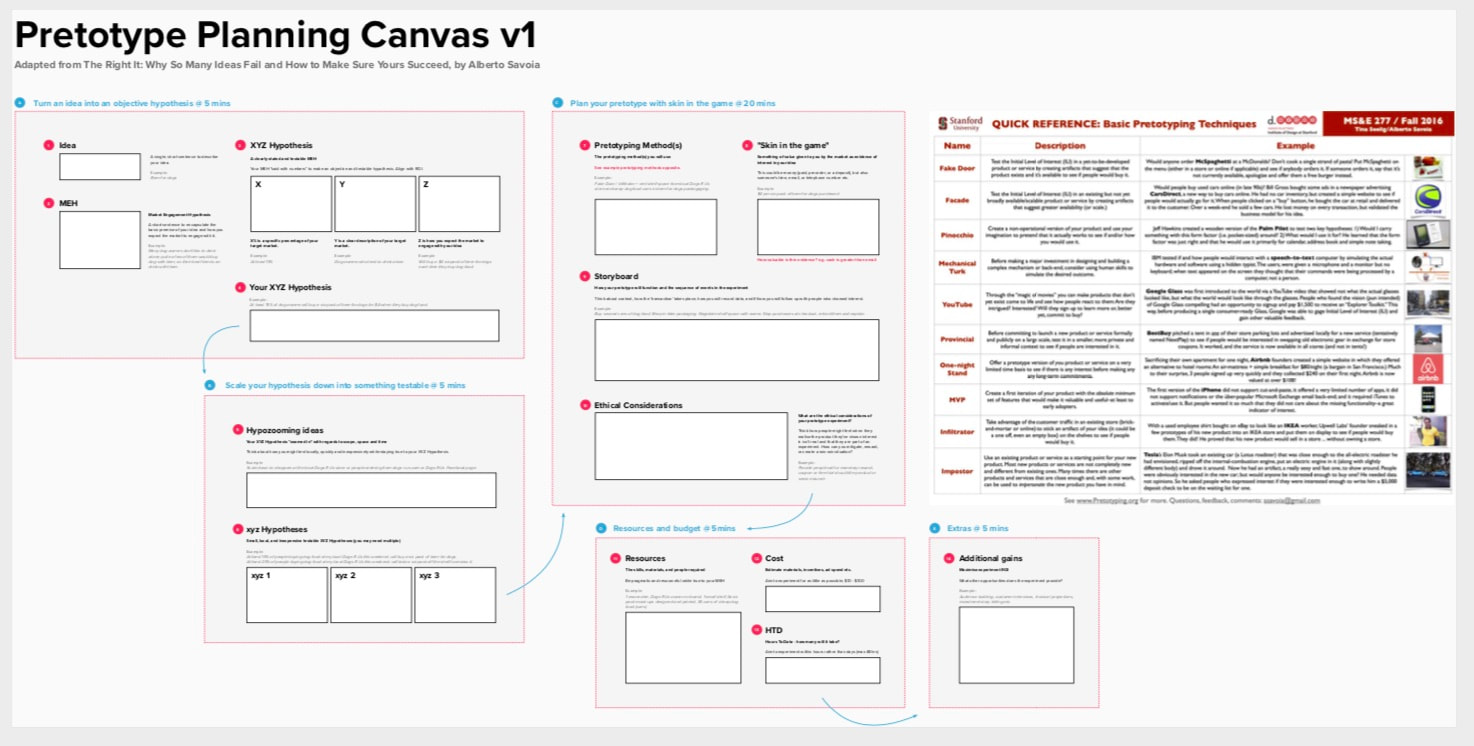Library
How to Start a Startup; The Methodologies
After the first wave of internet businesses reached success in the early 90’s, there quickly was a realisation that these businesses were different. They could get started and grow quickly, and reach crazy valuations. This was a time where the myths and tropes of ‘starting in a garage’ and raising millions of dollars on the back of a napkin got started.
After this realisation, a lot of smart people attempted to create approaches that lead to these new types of businesses that start and scale rapidly. All of these initial approaches were heavily influenced by human-centred design principles and agile software development. Both of these influences had been around for a while and were particularly useful for rapid product development, something that is critical for the new technology based businesses.

Customer Development.
One of the big developments in this space came when Steve Blank and his collaborator Bob Dorf had the insight that to start one of these businesses, you have to realise that a startup is not just a smaller version of a company.
A startup is something significantly different from a company, where a company knows how they make money and stay sustainable, a startup is searching for a way to make money. This might seem like an insignificant distinction, but it actually means you have to operate in a completely different way.
Steve came to this realisation after having wasted $25 million managing an investment fund. He saw and recognised what did not work in the businesses he funded. From there he started developing an approach that would increase the chances of finding a way to make money.
This approach is called Customer Development. One of the core tenets of Customer Development is that there are no answers inside the building, so you have to go out and talk to people.
This process is split up into 4 distinct steps in two phases. The first phase is the startup phase, this is where you do Customer Discovery and Customer Validation. The second phase, the company phase, the focus shifts to Customer Creation and Company Building.
You can take a deep dive into this in Steve’s book The Startup Owner’s Manual and his free course, The Lean Launchpad.

The Lean Startup.
While Steve was developing his approach, he was also teaching at a university. One of his students, Eric Ries, was working on a new internet business. When Eric approached Steve and asked for investment in the new venture, Steve agreed on the condition that Eric would use the Customer Development approach to get the business off the ground.
Eric not only used the Customer Development approach but massively expanded upon it by introducing lean and agile development principles into the approach. This led to the birth of The Lean Startup, an approach captured in the book that had a global impact beyond the world of startups.
Some of Eric’s most valuable contributions included the Build-Measure-Learn iterative cycle and Minimum Viable Product to facilitate fast learning and growth.
This Lean Startup approach is now being taught in business schools around the world and is often still underpinning the content of incubator and accelerator programs.

The Business Model & Lean Canvases.
Inspired by the development of the Customer Development and Lean Startup approaches, Alex Osterwalder realised that there is no place for business plans is this world of rapid learning and growth. By the time you have captured things in the plan, it is already outdated. At the same time he realised there is value in having clear insight into the moving parts of your business.
This led to the development of the Business Model Canvas, a tool that allows you to capture all key components of your business, on one page. In Steve and Eric’s later work the often use the Business Model Canvas as a tool to define what needs to be tested.
Ash Maurya realised that the Business Model Canvas is perfect for capturing the key components of a company, but maybe not a perfect fit for a startup. Which lead to the development of the Lean Canvas, a one-page business plan for startups.

Pretotyping.
Separate from all of the developments outlined above, Albert Savoia was working out Google and getting frustrated with how often new products get developed and they fail after a lengthy development process.
Even prototypes often took too long to make and were too expensive. This meant they couldn’t test that much with their users, which of course hinders progress.
He realised that if you can test if you are building the right ‘it’, before building ‘it’ right, you can test way quicker and ensure you are building something that people actually want. This led to the development of pretotyping, a number of techniques that allow you to test a non-functional version of your product in a matter of hours. Massively speeding up progress.

 Account
Account